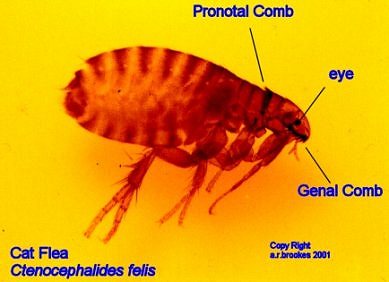Vetpharmacy.co.uk Cookie Policy : We use cookies to enhance your user experience. To find out more please view our cookie policy
Get the jump on fleas, treat your cat before it becomes a problem!
 With 1-5 cats suffering from a flea infestation, fleas are one of the most common parasites caught by cats and the most common flea is the cat flea. Flea infestations are irritating on their own, but can also cause further associated problems, such as Flea Allergic Dermatitis and tapeworm infestation. As a result, it is important to make sure that your pet is treated to prevent them from catching fleas in the first place.
With 1-5 cats suffering from a flea infestation, fleas are one of the most common parasites caught by cats and the most common flea is the cat flea. Flea infestations are irritating on their own, but can also cause further associated problems, such as Flea Allergic Dermatitis and tapeworm infestation. As a result, it is important to make sure that your pet is treated to prevent them from catching fleas in the first place.
Contrary to popular belief fleas do not jump from one pet to another. Instead, they are transferred to animals from their surrounding environment. Cats can pick up fleas from any area where other animals with fleas (e.g. foxes, hedgehogs, rabbits, other cats etc) have already been e.g. your garden, as this a likely breeding ground for fleas.
This makes it extremely important that cats are treated in order to prevent them from becoming infected with fleas and there are a range of products available on the market for this purpose. Products designed to prevent flea infestations include: flea collars, flea spray, spot on flea treatments, flea tablets and flea powder. All of these products work effectively to remove the risk of cats becoming infested with fleas in the first place.
It is also important to remember that if a cat does become infested with fleas it is not just the cat that will need treating. Other pets within the household and the cats surrounding environment (e.g. bedding, carpets etc) will need to be treated to remove the fleas, as this is where they will be breeding. In the case of severe flea infestation an environmental spray containing an Insect Growth Regulator will need to be used, in order to kill the developing eggs and larvae exist within the pet’s environment. You should still allow treated pets to have continued access to infested areas, as existing fleas will then be able to jump onto your treated pet, where they will be killed as a result of contact with the flea treatment that you have given them.